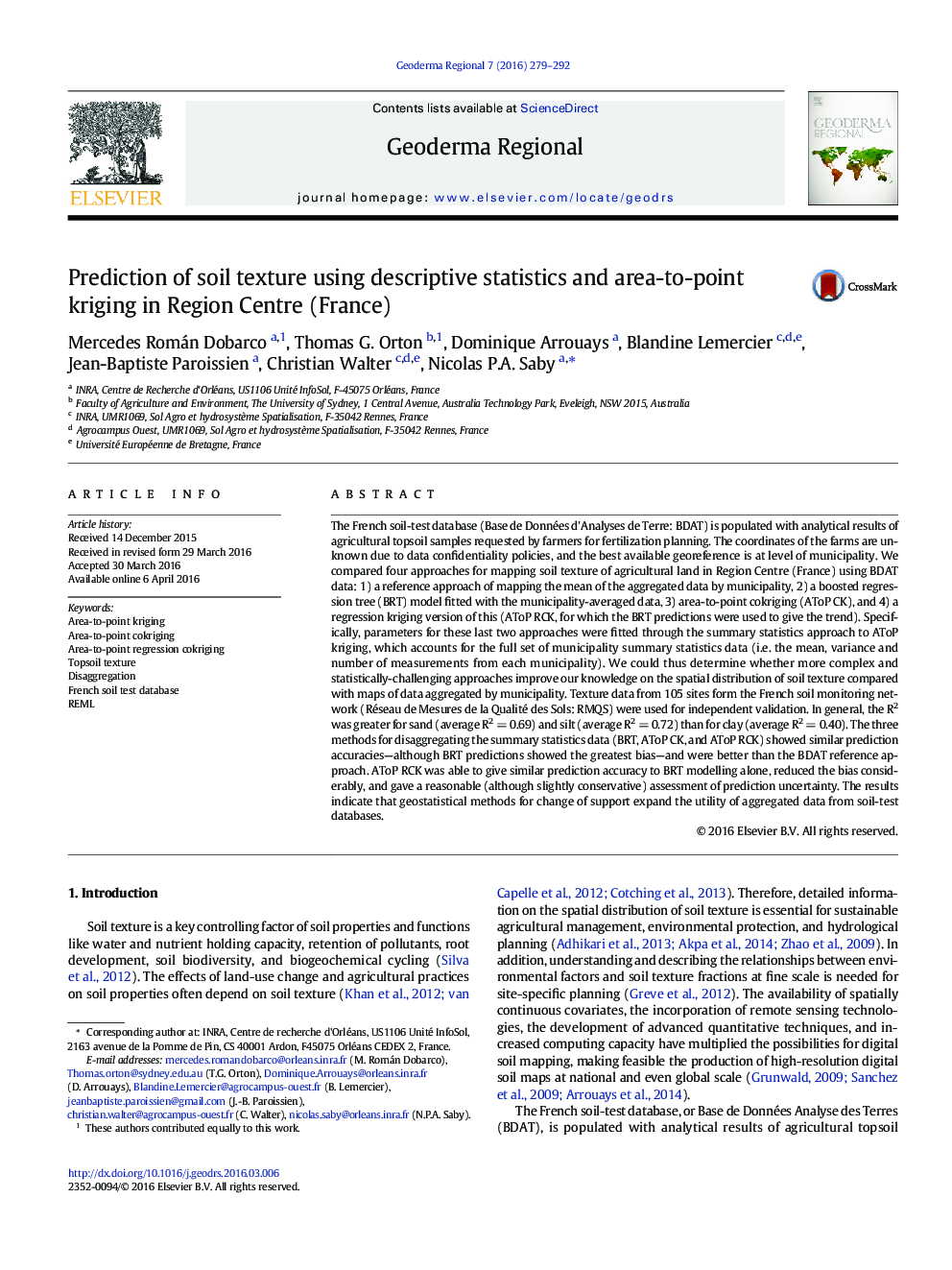| کد مقاله | کد نشریه | سال انتشار | مقاله انگلیسی | نسخه تمام متن |
|---|---|---|---|---|
| 4480744 | 1412772 | 2016 | 14 صفحه PDF | دانلود رایگان |
• We compared three methods for disaggregating areal topsoil texture data.
• Predictions were better for sand and silt (~ R2 = 0.7) than for clay (~ R2 = 0.4).
• Boosted regression tree models showed the greatest bias [(−) clay, sand, (+) silt].
• Area-to-point (AToP) cokriging and regression cokriging assessed uncertainty well.
• AToP regression cokriging was the best disaggregation method in terms of accuracy.
The French soil-test database (Base de Données d'Analyses de Terre: BDAT) is populated with analytical results of agricultural topsoil samples requested by farmers for fertilization planning. The coordinates of the farms are unknown due to data confidentiality policies, and the best available georeference is at level of municipality. We compared four approaches for mapping soil texture of agricultural land in Region Centre (France) using BDAT data: 1) a reference approach of mapping the mean of the aggregated data by municipality, 2) a boosted regression tree (BRT) model fitted with the municipality-averaged data, 3) area-to-point cokriging (AToP CK), and 4) a regression kriging version of this (AToP RCK, for which the BRT predictions were used to give the trend). Specifically, parameters for these last two approaches were fitted through the summary statistics approach to AToP kriging, which accounts for the full set of municipality summary statistics data (i.e. the mean, variance and number of measurements from each municipality). We could thus determine whether more complex and statistically-challenging approaches improve our knowledge on the spatial distribution of soil texture compared with maps of data aggregated by municipality. Texture data from 105 sites form the French soil monitoring network (Réseau de Mesures de la Qualité des Sols: RMQS) were used for independent validation. In general, the R2 was greater for sand (average R2 = 0.69) and silt (average R2 = 0.72) than for clay (average R2 = 0.40). The three methods for disaggregating the summary statistics data (BRT, AToP CK, and AToP RCK) showed similar prediction accuracies—although BRT predictions showed the greatest bias—and were better than the BDAT reference approach. AToP RCK was able to give similar prediction accuracy to BRT modelling alone, reduced the bias considerably, and gave a reasonable (although slightly conservative) assessment of prediction uncertainty. The results indicate that geostatistical methods for change of support expand the utility of aggregated data from soil-test databases.
Journal: Geoderma Regional - Volume 7, Issue 3, September 2016, Pages 279–292
